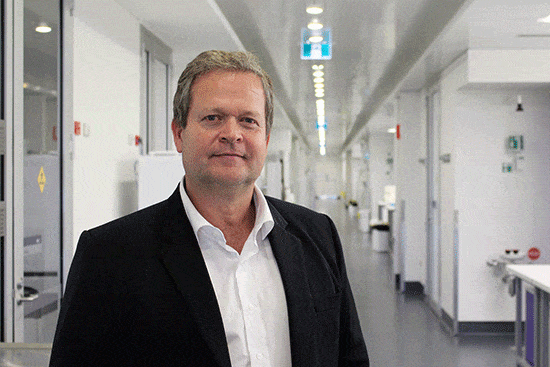
HMRI Director Professor Michael Nilsson hailed the decision today, saying the Government had recognised the importance of medical research in securing the nation’s long-term health and prosperity.

Director Michael Nilsson has welcomed Senate approval of the medical research Future Fund.
More than a year after it was first touted, legislation for the Federal Government’s Medical Research Future Fund (MRFF) has been passed in the Senate, bringing hope to the Australian medical research sector and the entire country.
HMRI Director Professor Michael Nilsson hailed the decision today, saying the Government had recognised the importance of medical research in securing the nation’s long-term health and prosperity.
“Today’s good news will hopefully be tomorrow’s ‘better’ news,” Professor Nilsson said. “For too long, good ideas have struggled to evolve from seed phase because the purse could stretch only so far, but we finally have the financial stability needed to encourage our best and brightest minds to go into medical research and to stay.
“Globally it will elevate Australia to the top echelon of nations doing the heavy lifting in health research and development.”
The President of the Association of Australian Medical Research Institutes (AAMRI), Professor Doug Hilton, congratulated the Government for standing firm on this nation-shaping fund.
“We also congratulate the Parliament for recognising the MRFF’s tremendous value and offering bi-partisan support. We especially thank the Greens for demonstrating their commitment to bold health and medical policy by supporting this legislation.”
The MRFF is expected to deliver more than $400 million in disbursements to researchers over the next four years, building to $1 billion per year within the decade. This funding is in addition to that allocated to the National Health and Medical Research Council (NHMRC).
“More than ever, we need community support to seed-fund the projects that will garner future Government investment,” Professor Nilsson added.
“It can take years, even decades, for research to reap clinical benefits because researchers have to unravel highly complex health conundrums. But our findings will become increasingly important with an ageing population, where diseases will create an increasing burden on Australian society.”
Professor Hilton said that medical research and innovation supported by the MRFF would not only improve life expectancy and quality of life for Australians, it would also deliver financial returns to the nation.
“This is an historic day, and while it has taken a year or so to get to this point, we are very pleased to finally be here,” he said.
“Every dollar invested in health and medical research generates more than two dollars in health and productivity gains by reducing the burden of disease on the health system and productivity, and through the creation of innovative businesses and jobs in the health industry.
“And then there is that intangible benefit that medical research delivers: hope. Every person fighting a life-threatening disease, and every one of their friends and family, lives in the hope that health and medical research will deliver to them better treatments, or even cures for their illness.
“We know we can make many more discoveries, we just need the money to do it, and the MRFF will help us tremendously towards the very best goal of a healthier Australia.”
* The Hunter Medical Research Institute (HMRI) is a member of the Association of Australian Medical Research Institutes. HMRI is a partnership between the University of Newcastle, Hunter New England Health and the Community.
HMRI would like to acknowledge the Traditional Custodians of the land on which we work and live, the Awabakal and Worimi peoples, and pay our respects to Elders past and present. We recognise and respect their cultural heritage and beliefs and their continued connection to their land.

Hunter Medical Research Institute
We’re taking healthy further.
Locked Bag 1000
New Lambton
NSW, Australia, 2305



This site is protected by reCAPTCHA and the Google Privacy Policy and Terms of Service apply.
Copyright © 2024 Hunter Medical Research Institute | ABN: 27 081 436 919
Site by Marlin Communications
